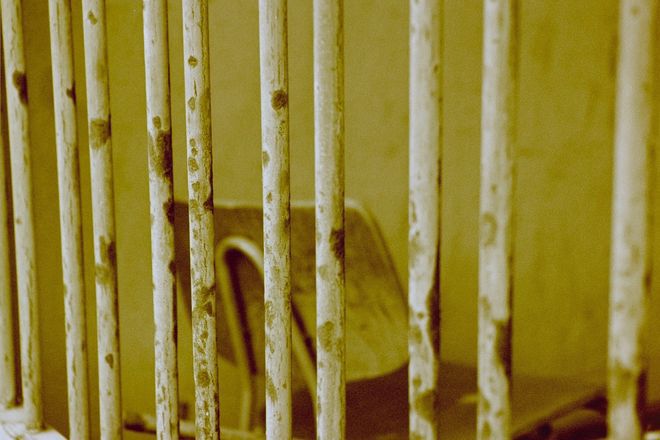HOLMAN PRISON PARTIAL CLOSURE: Impact on Limestone prison unknown
Published 6:00 pm Wednesday, January 29, 2020

- Jail bars
MONTGOMERY — More than 600 inmates will be transferred from Holman Correctional Facility following a decision to close the troubled Alabama prison, but it’s unknown how many prisoners may be sent to Limestone Correctional Facility.
Officials with the Alabama Department of Corrections announced Holman’s main building would be closed because of infrastructure problems caused by years of neglect. The move is the latest upheaval in the prison system that has struggled with overcrowding, low staffing, violence and aging facilities.
Trending
Alabama Corrections Commissioner Jeff Dunn said 617 inmates will be sent to other state prisons after the closure. The decision was made because maintenance crews were struggling daily to maintain sewer and electrical systems housed in a tunnel running beneath the main prison building, Dunn said.
Some inmates, including death row inmates, will remain at Holman in units that run on separate systems, he said.
“This is a real and serious issue that cannot be understated and, after learning the extent of the risks associated with continued maintenance attempts at Holman Correctional Facility, moving quickly on our plans to decommission was the right and only decision,” Dunn said.
Samantha Rose, public information specialist with the ADOC, said it was unknown Wednesday how many prisoners would be transferred to Limestone Correctional Facility.
“We’re just at the beginning of phase one, so the decision about where the location transfers will be has not been determined at this point,” she said. “We’ll be posting updates to our website every Tuesday. There could be a clearer picture next week, or at least a clearer idea of where we’re going.”
According to an October report from the ADOC, Limestone was at 134% capacity. The report said the prison was designed to hold 1,628 but had a month-end population of 2,192.
Trending
There has been a national spotlight on troubled prison systems in Alabama and Mississippi because of deadly violence and unsanitary conditions. Mississippi’s governor announced this week the state will take steps to close part of a state prison that has been rocked by deadly violence and beset by longstanding problems such as broken toilets and moldy showers.
The Department of Justice last year issued a report condemning Alabama prisons for excessive levels of violence and inmate deaths and a critical staffing shortage. The Justice Department threatened to file a lawsuit against the state unless the problems were addressed.
Groups representing inmates in ongoing litigation over prison conditions and medical care said the closure will add inmates to prisons already struggling with crowding, violence and staffing.
“Rather than pursuing band-aid solutions, Alabama’s Department of Corrections and Governor Ivey must focus their efforts on addressing overcrowding and understaffing,” CJ Sandley, a senior staff attorney with the Southern Poverty Law Center, said in a statement.
Dunn told reporters the transfer will place additional stress on the rest of the system, but added they are working to mitigate that impact.
U.S. Attorney Jay Town, who has been leading the negotiations between the state and the Justice Department, said he was “disappointed that we were not privy to the decision to close Holman at the time such a decision was being considered.” Town added, “we will continue to forge ahead in our good faith negotiations.”
Alabama will continue to house death row inmates at Holman but the inmates will be moved to a restrictive housing unit that has separate infrastructure systems. The state on Tuesday night moved 21 death row inmates from Donaldson Correctional Facility to Holman. The execution chamber at Holman will still be used for carrying out executions and the state is consulting on how to maintain the chamber, Dunn said.
The state will also maintain a free-standing dorm that will house 150 low-risk inmates serving sentences of life without parole. Those inmates will work in the prison industry shops that make license plates and clothing.
The state did not give a time frame for the transfer of inmates, citing security reasons.
Infrastructure not violence
The decision to close Holman was purely for infrastructure problems, and not because of the violence that has plagued it and other prisons, Dunn said.
The Southern Poverty Law Center said there have been at least four deaths at Holman since early December. The department announced in December it was investigating the death of Willie Leon Scott, 48. The department didn’t give specifics but said his injuries were the result of a Dec. 4 incident at Holman. Moses Robinson, 38, died Dec. 31 from injuries sustained in an attack at Holman, according to the department.
In 2016, the Holman warden and a correctional officer were stabbed during a riot at the prison. Inmates started a fire and posted pictures of the uprising on social media. A corrections officer at the prison was killed in 2016 after being stabbed by a prisoner.
The closure also comes as Alabama Gov. Kay Ivey weighs a proposal to close most state prisons and replace them with three new mega-prisons. The prison system has highlighted the infrastructure problems as they take reporters and lawmakers on tours of existing prisons.
Dunn said the decision to close the prison was not related to the construction proposal, but Holman illustrates the problems in the system.
“Our facilities are decaying. They are dilapidated,” he said.
— Associated Press reporter Kim Chandler contributed to this report.





